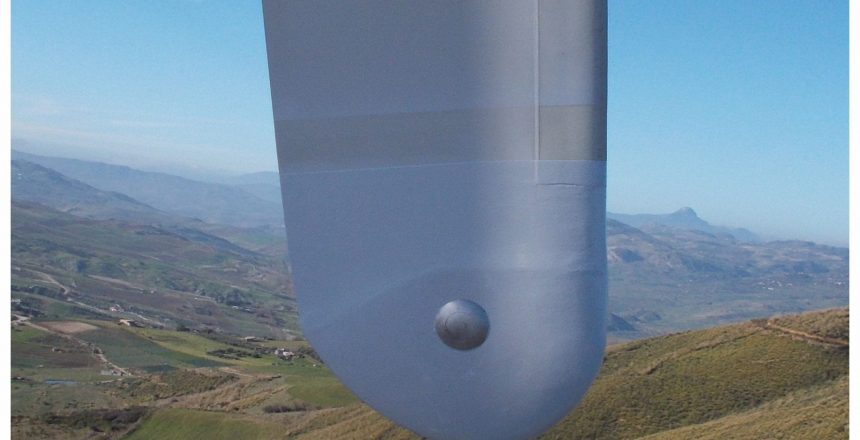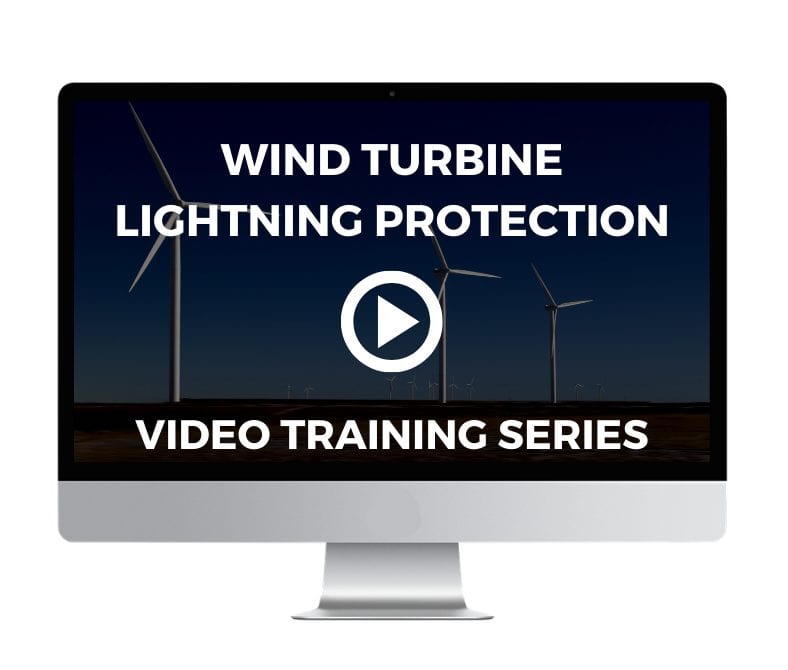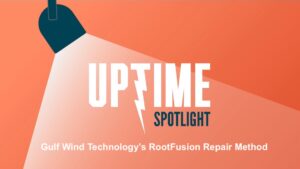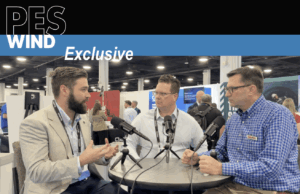Since the second edition of IEC 61400-24: Lightning Protection of Wind Turbines was approved in 2019, is the industry giving the new standards the attention they deserve?
The new standards are lengthy but worth the read. For the time-crunched, an Insight presented at the 2019 International Symposium on Lightning Protection is a great place to start. In the paper, the authors describe the 2019 standards as a “new update of the norm.” The new parameters, while warranted, present some challenges for turbine manufacturers and start to explain many of the concerns wind farm managers have about production and ongoing performance.
New Data Shed Light on Challenges for Wind Turbine Operators and Manufacturers
The updates are based on findings from research conducted and real-world data collected since the initial parameters were defined in 2010. Since then, we’ve gained a much better understanding of lightning behavior and the interplay between weather, wind, materials, site factors (geography, soil, moisture levels) and the aerodynamics of various wind turbine designs. Much of that knowledge was factored in when the standards were updated. That’s the good news.
Unfortunately, adoption of the standards has been uneven, to say the least. While it’s up to manufacturers to implement the improved standards, wind owners and operators face the most immediate risks. That’s why it’s helpful to consider the rationale behind the updates and how they may address some ongoing production challenges in wind farming operations.
We’ve discussed issues related to some of the standards, particularly regarding testing, in recent Uptime podcasts, and we continue to bring in experts to review industry news. Don’t miss these need-to-know updates – subscribe to Uptime!
Lightning Risks are Site Specific, Lightning Protection Should Be Too
Because factory LPS is not tested in the field, the conditions in which it will work as expected are largely unknown. What’s adequate for one wind site might be completely inadequate for another due to frequency and intensity of lightning in that local environment.
And, because a factory LPS requires real-world data to prove the level of protection it provides, it’s impossible to know how well a given installation of turbines will endure the local lightning conditions until multiple years of data has been gathered – which can mean significant damage, downtime and lost production revenue.
On the manufacturing side, that means upgrades and improvements can take years.
While the updated standards specifically address the need for location-specific performance data, unfortunately, operators can only speculate about how much lightning damage—and how much downtime and lost revenue—might occur over time when installing turbines on a new site that doesn’t have previous lightning field data.
So when production drops, operators often turn to blade modifications to boost AEP, but insights in the updated standards – again, unfortunately – suggest that modifications may not provide the solution they’re looking for.
IEC 61400-24 Ed. 2: Improved Lightning Protection Standards for Wind Turbines
Highlights of the updated Lightning Protection standards for wind turbines of special interest to operators include:
- The recommendation that every component should be designed for Lightning Protection Level I (LPL1), able to manage a peak current of 200kA, specific energy content of 10,000kJ/Ohm, an average rate of current rise of 200kA/Jus, and a total charge transfer of 300C
- Special focus and updated parameters to protect equipment from upward lightning and winter lightning
- The inclusion of a new risk calculation method for assessing the number of strikes to wind turbines and damage.
- Accounting for different designs and types of air termination systems, which can define specific lightning exposure
- That lightning protection maintenance and inspection is site specific
- As blade failures continue to affect wind energy production in the US and around the world, we see the most relevant update being that components should be designed to LPL 1.
Blade Modifications and Test Specification
The issue of retrofits presents a very practical challenge – by their nature, retrofits are installed after initial installations, so manufacturers cannot anticipate how they will affect lightning behavior. However, blade modifications significantly affect attachment points and lightning paths, rendering original lightning protection systems less effective.
Case Study: UK site gets blade LP retrofit
The updated standards note that test specification should consider where initial attachment occurs as well as blade orientation for leader attachment, and to take into account any blade modifications (winglets, serrations). In other words, operators need to understand that while retrofits can solve some problems, they may complicate others.
Cost-Benefit: How Lightning Protection Pays Off for Wind Turbine Operators
Ironically, while wind energy is one of the fastest-growing global industries, dominated by a few large manufacturers (like Vestas), dozens – or hundreds – of small organizations are necessarily working together to ensure turbine systems perform efficiently and can throughout their expected lifetimes in spite of the harsh environments in which they’re installed.
Appropriate standards are critically important. Implementing standards across an industry is an incredibly huge project. So huge, in fact, that it’s safe to say no Gantt chart in the world is big enough to handle it.
Manufacturers and Wind farm operators (and the general public) will all benefit, eventually, from the vastly improved and tremendously better-informed standards, however, the industry- and worldwide adoption of standards – especially voluntary ones – is bound to be a slow process.
Who’s Responsible for Protecting Wind Turbines?
The question of who is responsible for lightning protection has not been decisively answered, but for practical purposes, wind energy production isn’t going to stop and wait until that question has been settled, legally or otherwise.
Force majeure and your turbines
As the authors of the insight paper note, “lightning protection should be done from the viewpoint of risk management.”
So while manufactures are in the position to implement most of these standards, they may not be in a big hurry to do so, as wind farm owners and operators are the ones facing the most risk, at least in the next 5- to 10 years.
The bottom line is that owners need to consider how implementing these standards will play out in the long term – protecting their people as well as equipment and investments – and in the short term, operators must find solutions that improve production while maintaining or improving safety and operational standards on their sites.
If you’re concerned bout how lightning may be affecting your wind turbine production, contact us.
Allen Hall is a leading lightning protection expert who has worked in lightning protection of wind turbines and aircraft for more than 20 years. To schedule a consultation with Hall regarding the best lightning protection design and implementation for your wind turbine or aerospace project, call 413.217.1139 or contact Weather Guard Lightning Tech here.






